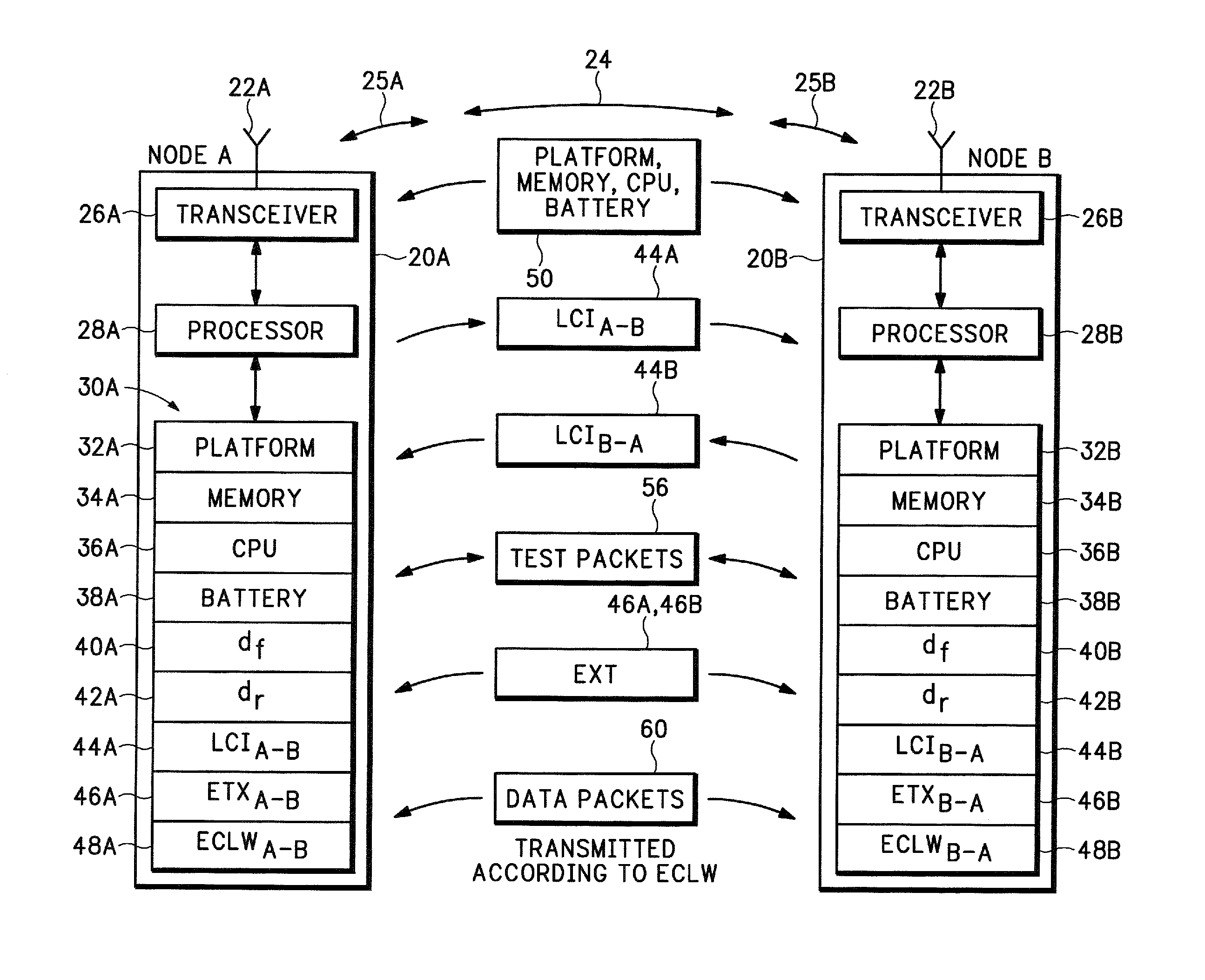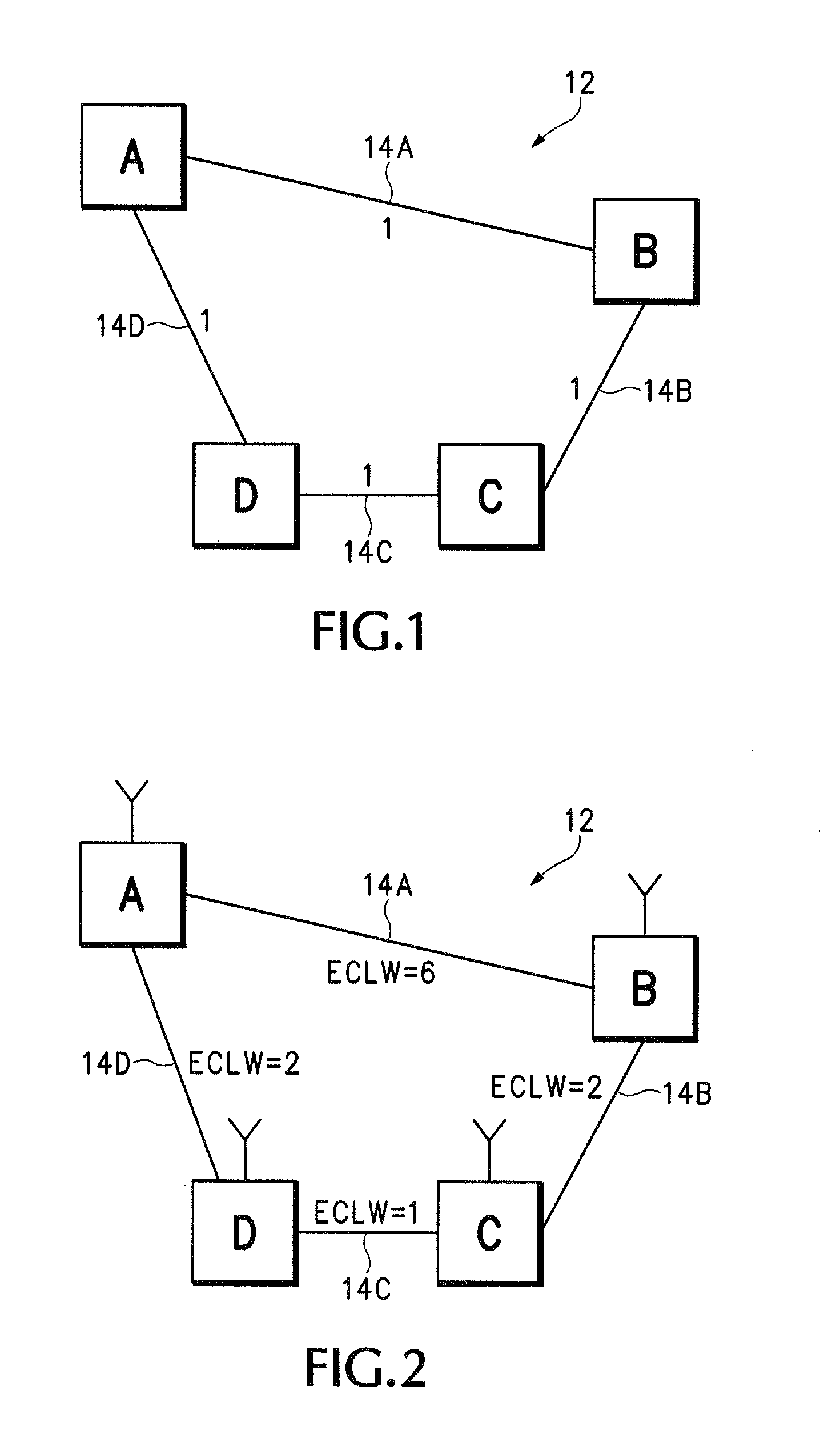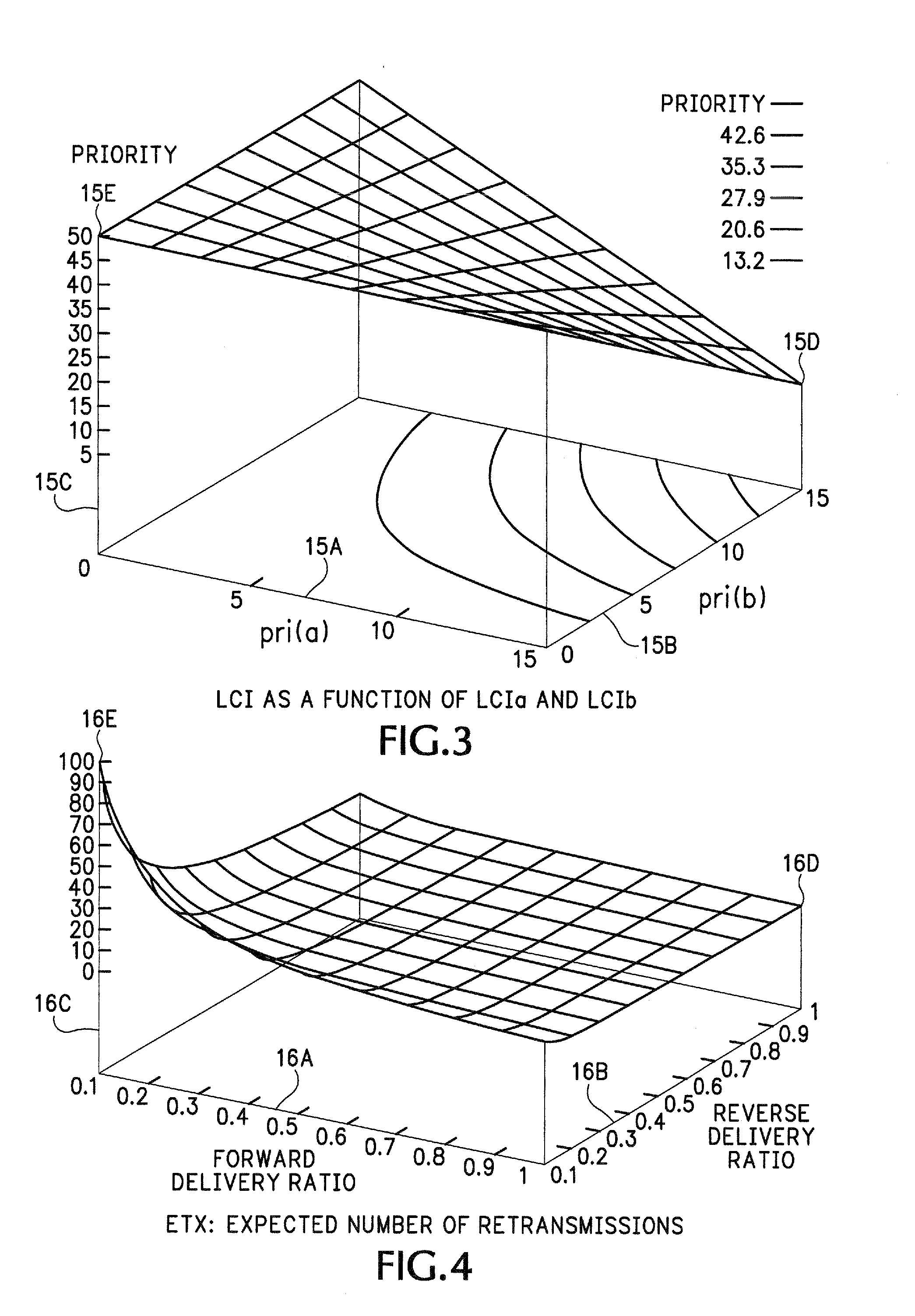Ad-hoc network routing metric optimization
a network routing and optimization technology, applied in the field of ad-hoc network routing metric optimization, can solve the problems of link capacity, delay, bit error rate, wireless link may no longer provide the optimal path, and slow down transmit ra
- Summary
- Abstract
- Description
- Claims
- Application Information
AI Technical Summary
Benefits of technology
Problems solved by technology
Method used
Image
Examples
Embodiment Construction
[0016]FIG. 1 explains how a traditional network 12 uses unit metrics to route packets. Each of the devices or nodes A, B, C, and D represent any wired or wireless computing system that either sends, receives, and / or forwards packets. For example, any of devices A-D can be a Personal Digital Assistant (PDA), Personal Computer (PC), cellular telephone, text messaging device, web server, pager, or any another wireless computing system.
[0017] Traditionally, each link 14A-14D is assigned a unit metric value of 1, which may be a reasonable approximation in a wired Internet network. Device A may want to send packets to device B. A conventional routing algorithm that uses unit metrics may normally select path 14A since it represents the shortest path (fewest number of hops) between nodes A and B.
[0018] However, in a wireless network, the most direct path between nodes A and B may not be the best path. The better path may have the highest throughput, least delay, or any of a number of othe...
PUM
 Login to View More
Login to View More Abstract
Description
Claims
Application Information
 Login to View More
Login to View More - R&D
- Intellectual Property
- Life Sciences
- Materials
- Tech Scout
- Unparalleled Data Quality
- Higher Quality Content
- 60% Fewer Hallucinations
Browse by: Latest US Patents, China's latest patents, Technical Efficacy Thesaurus, Application Domain, Technology Topic, Popular Technical Reports.
© 2025 PatSnap. All rights reserved.Legal|Privacy policy|Modern Slavery Act Transparency Statement|Sitemap|About US| Contact US: help@patsnap.com



